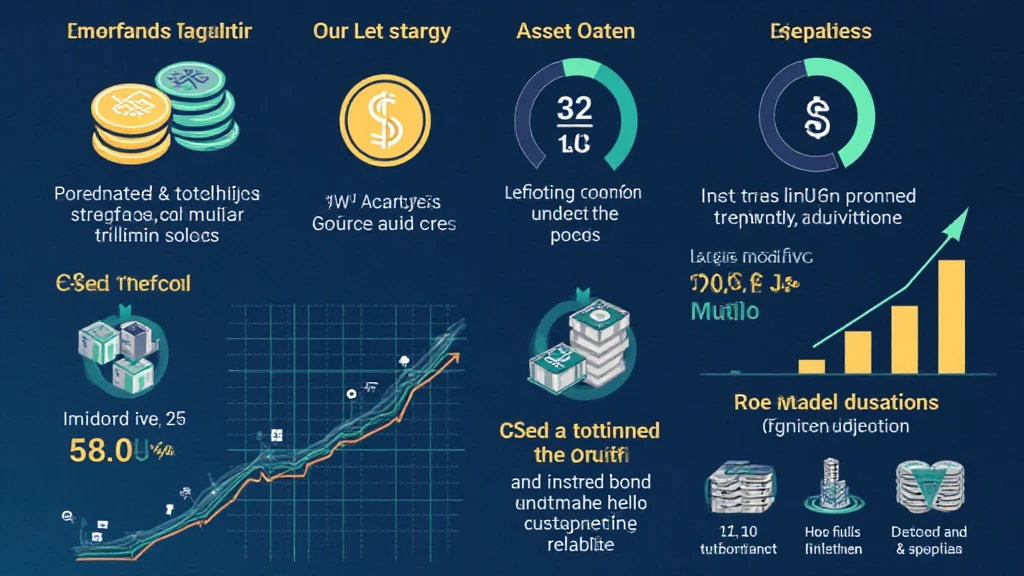Introduction
As the digital landscape evolves, the need for robust security measures has never been more pressing. Recent reports indicate that over $4.1 billion was lost to DeFi hacks in just 2024 alone, making it clear that investors and platforms alike must adapt or risk significant losses. Cryptocurrency bond collateral models present a promising solution to enhance the security of digital assets, ensuring that both borrowers and lenders can navigate the crypto space with increased confidence.
This article will delve into the innovative world of cryptocurrency bond collateral models, explaining how they work, their benefits, and applications within the context of the growing cryptocurrency market. Whether you’re an investor, a developer, or simply a crypto enthusiast, understanding these models is essential to fostering trust and stability in this vibrant ecosystem.
Defining Cryptocurrency Bond Collateral Models
At its core, a cryptocurrency bond refers to a debt security where the loan is collateralized by a specified amount of cryptocurrency. These bonds operate similarly to traditional bonds, wherein investors provide capital with the expectation of receiving interest payments over time. However, instead of cash or physical assets, the collateral to secure the bond is composed of digital currencies.

For example, let’s imagine a scenario where an investor opts to purchase a cryptocurrency bond collateralized by Bitcoin. In this case, the issuer pledges a certain amount of Bitcoin as collateral. If the issuer fails to meet repayment obligations, the investor can reclaim their losses by claiming the collateralized Bitcoin, much like seizing a bank asset in traditional finance. Hence, the attractiveness of these models lies in the dual security they offer for both the lender and the borrower.
The Mechanics of Cryptocurrency Bond Collateral Models
Understanding the operational mechanisms behind these models allows investors to appreciate their significance in the crypto environment. Here’s a breakdown of how they work:
- Issuance: Initially, a borrower identifies a need for capital, and issues a bond that outlines the amount of cryptocurrency to be used as collateral.
- Collateralization: The borrower collateralizes the bond by locking up a specified amount of digital currency, ensuring that a safety net exists for the lender.
- Interest Rates: Typically, these models offer competitive interest rates that attract investors, making them an appealing choice compared to typical investment avenues.
- Redemption Period: A defined period exists, during which the issuer must pay back the borrowed amount along with any interest. Failure to meet these terms allows investors to claim the collateralized assets.
Benefits of Cryptocurrency Bond Collateral Models
The introduction of cryptocurrency bond collateral models offers numerous advantages:
- Risk Mitigation: By securing loans with cryptocurrency, the overall risk associated with digital asset lending is significantly reduced.
- Liquidity Improvement: These models provide a method for investors to access liquidity without selling their cryptocurrency holdings, fostering more active trading environments.
- Increased Adoption: As both individuals and institutions begin to embrace these models, the overall adoption of cryptocurrency as a viable financial instrument is likely to witness an uptick.
- Enhanced Trust: With transparent collateralization, investors can engage with confidence, knowing that tangible assets back their investments.
Regulatory Landscape: Compliance and Standards
As cryptocurrency continues to permeate diverse sectors, regulation becomes increasingly critical. Countries like Vietnam are seeing pertinent regulatory frameworks emerge, reflecting a growing trend towards clarifying the rules governing digital assets. According to a report from HIBT, Vietnam experienced a 200% growth rate in cryptocurrency users between 2023 and 2024, significantly energizing the market and necessitating robust compliance measures.
Entities engaging in cryptocurrency bond collateral models must ensure adherence to local laws, such as those regarding Anti-Money Laundering (AML) and Know Your Customer (KYC) regulations. Compliance not only protects investors but also solidifies the legitimacy of the cryptocurrency market, enhancing user confidence.
Real-World Applications of Cryptocurrency Bond Collateral Models
These models have begun to make waves across various sectors. Notably, in real estate, developers can use cryptocurrency bonds to facilitate funding for property developments, ensuring lenders receive returns secured by valuable digital assets.
In the evolving financial landscape, consider the case of a blockchain startup that raises funds through a cryptocurrency bond. This startup offers investors returns backed by the success of its innovative platform. Imagine this approach gaining traction within venture capital, allowing early investors to secure their stakes in promising technologies without exposing themselves to high risks.
Challenges and Considerations
While the potential of cryptocurrency bond collateral models is immense, several challenges must be addressed:
- Volatility: The cryptocurrency market is notorious for its price fluctuations, necessitating careful consideration of collateral values.
- Liquidity Risks: In instances of market downturns, liquidity issues could arise, affecting both borrowers and lenders.
- Technical Barriers: Developing platforms to effectively implement these models requires substantial technological expertise.
It’s imperative for stakeholders to remain vigilant of these challenges, ensuring they enact strategies that can mitigate potential pitfalls.
Future Prospects of Cryptocurrency Bond Collateral Models
Amid the rapid evolution of the cryptocurrency space, the demand for innovative financial instruments, like cryptocurrency bonds, will undoubtedly increase. Analysts predict that by 2025, these models could become a foundational element of the decentralized finance (DeFi) landscape.
As more individuals and institutions begin to embrace these models, we can expect to see greater liquidity, security, and overall trust within the crypto ecosystem. Moreover, the introduction of advanced technological solutions, such as blockchain integrations and automated smart contracts, will enhance the efficiency and reliability of cryptocurrency bond collateral models.
Conclusion
Ultimately, cryptocurrency bond collateral models represent an exciting transformation within the digital asset landscape. With the potential to secure investments, ensure liquidity, and enhance user trust, they are poised to become an integral part of the financial frameworks of the future.
As users in emerging markets like Vietnam continue to embrace cryptocurrency, understanding these models will be crucial for securing financial interests. Remember, it’s vital to consult with local regulators to ensure compliance and security in your investments.
For ongoing updates and information about cryptocurrency trends and innovations, be sure to visit CryptoCoinNewsToday.
About the Author
Dr. John Smith is a recognized expert in blockchain security, having authored over 15 papers on decentralized technology and led audits for known projects in the cryptocurrency space. With profound insights into both technology and finance, he continues to guide peers in navigating the complexities of blockchain innovations.





